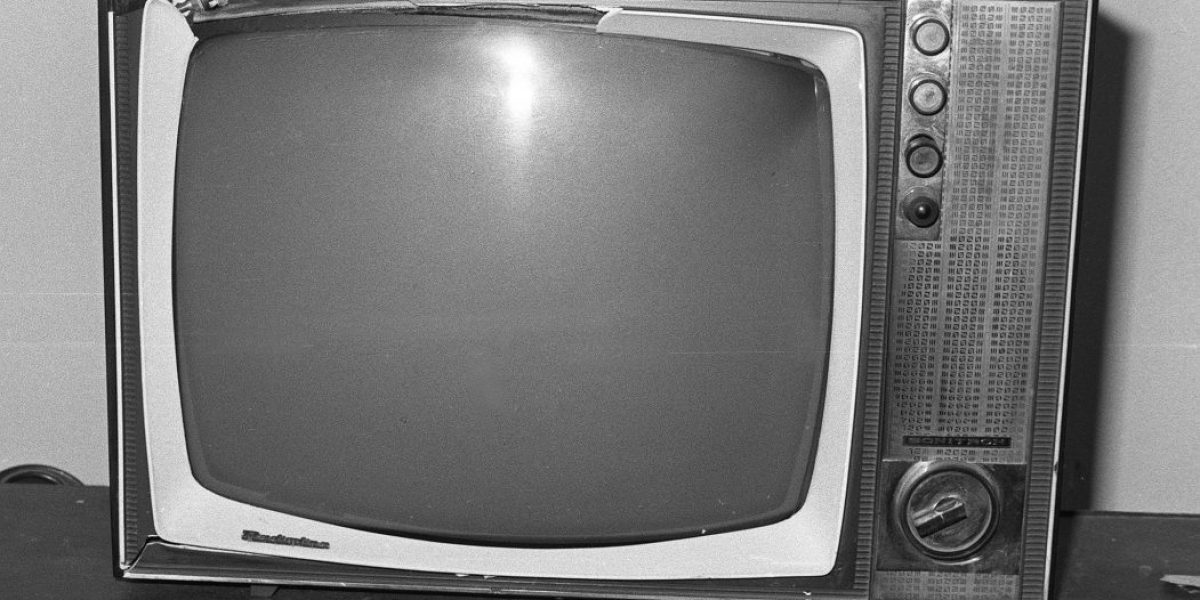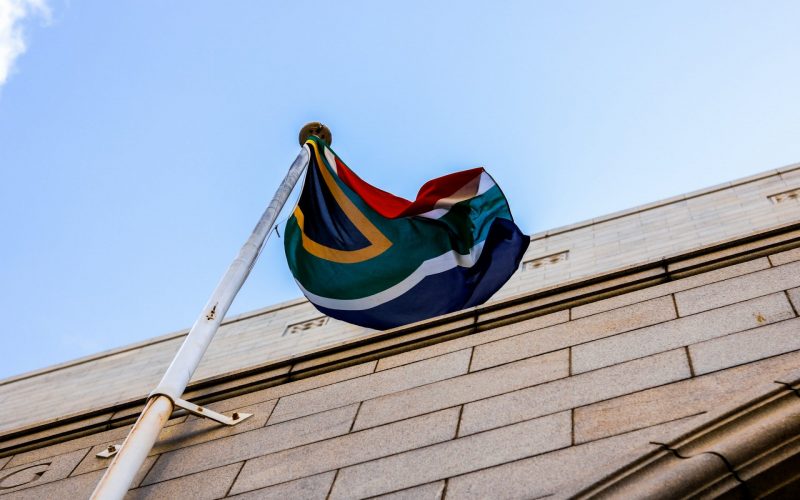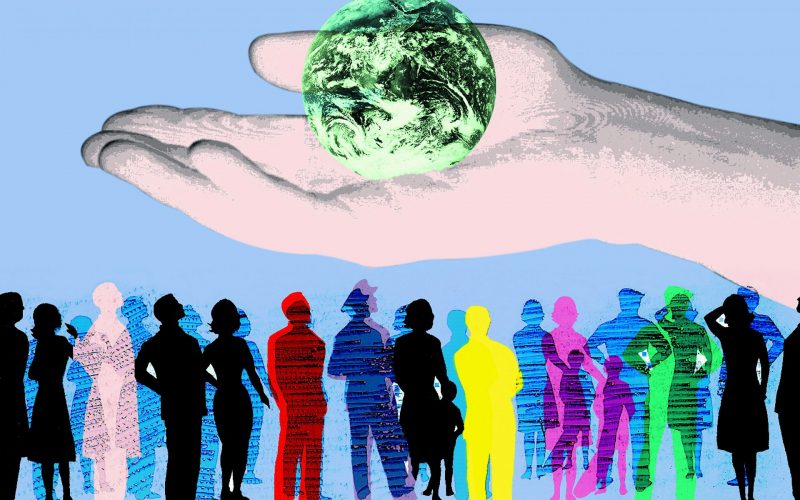On the show, a well-respected teacher, Thabang, repeatedly abused his wife, Matlakala. When she told her mother about the abuse, she was told she must ‘bekezela’ – endure the abuse – because it’s a woman’s duty to make a marriage work. Thabang’s father agrees, and says husbands must discipline wives ‘according to tradition.’ But Matlakala’s father disapproved, arguing that violence against women has never been condoned in traditional culture.
Opening up eyes
Matlakala’s beatings got worse – until she was hospitalized. There she learned about South Africa’s new Domestic Violence Act, and found out how to get a protection order. She and her father asked for help from the community, and when Thabang begins to beat Matlakala again, neighbors took action by beating pots and pans in front of their home to make it clear they disapprove. Thabang ultimately was arrested and convicted for abuse and for breaking the protection order.
‘Before those episodes, I used to think domestic violence happened because the woman causes problems with the husband,’ said Zonke Ntshwanti, 29, a security guard from Johannesburg. ‘But Matlakala on Soul City was so nice and kind; she was an African woman. And it wasn’t her fault at all.’
Soul City is one of two television series produced by the Johannesburg-based Soul City Institute for Health and Development Communication, a not-for-profit organisation often regarded as an international leader in public health communications. Its multimedia communications strategy uses drama to impart social norms, attitudes and practice – bridging the gap between education and entertainment in a field now known as ‘edutainment.’
Eleven years after South Africa’s transition to democracy, edutainment is creating a new field of social leadership in this nation of 47 million. Soul City, and a corresponding series for younger viewers, Soul Buddyz, expose the nation’s diverse communities to depictions of cultural expectations and norms.
‘Cultural beliefs may make it difficult for an individual to change their behavior,’ said Thuli Shongwe, senior research officer at Soul City. ‘We knew from our research that women said, “In our culture, women are supposed to endure abuse.” And other women endorse abusive behavior. It is cultural.’
‘It’s a very powerful tool, the edutainment approach, in dealing with societal beliefs and cultural things that inhibit people from changing,’ Shongwe said.
The Soul City and Soul Buddyz series each include more than a dozen half-hour television episodes, a corresponding radio drama – broadcast in nine of South Africa’s 11 official languages – as well as glossy print material. The organisation’s annual budget is about $15 million, which is funded in part by government departments. But it remains largely dependent on international donors, including the European Union and the United Kingdom’s Department for International Development (DFID), as well as corporate sponsors such as British Petroleum and Old Mutual.
Yet its award-winning research methodology, television program and print materials are now being exported to SADC nations and beyond, providing a possibility for similar education programs throughout the developing world.
Born from reality
Fifteen years ago, Dr Garth Japhet was working as a medical doctor at a neighborhood clinic in Alexandra, a township just north of Johannesburg.
This was when South Africa was also perched on the edge of what would rapidly become a major epidemic: HIV was becoming more and more common among patients.
‘It was at the point where people were projecting a huge epidemic,’ he said.
Japhet worked primarily with mothers and children, and over time he noticed that patients came in repeatedly for the same conditions – largely because they had limited knowledge about how to stay healthy.
‘The number one cause of child death at that point was diarrhoea,’ said Japhet. ‘At least on a weekly basis, either a child died of – or was dying because of – dehydration’ – an easily preventable death, particularly in an urban area.
‘The solution is a really simple one, it’s about teaching mothers about rehydration,’ he said.
But Japhet found that simply conveying clinical information wasn’t enough.
‘It also has to do with complex cultural issues,’ he said.
Japhet teamed up with Dr Shereen Usdin to develop what would become Soul City, a health education programme that addresses common problems while exploring the cultural barriers that sometimes prevent healthy choices. Their idea was to create a television drama series, in conjunction with a corresponding radio series and print material.
It was a creative revolution in South Africa. ‘Decades of apartheid had created both a pervasive distrust of national broadcasters and a ‘massive education gap,’ according to David Jammy, head of Curious Pictures, a Johannesburg television production company that has produced three series of Soul City.
‘Immediately, it was an absolute phenomenon,’ Jammy said. ‘In that climate, Soul City was a drama that reached out to the majority of the population. It was educative at a time when there was a real hunger for education, and it was reliable.’
Creating social change
Initial episodes of Soul City addressed issues such as HIV/Aids, mother and child health, smoking and alcohol abuse. Subsequent series have address various aspects of the Aids pandemic, to which Soul City dedicates about 60% of its content, Japhet said. Later story-lines included health-related issues such as depression and rape, as well as life skills such as personal finance, small business development, and adult literacy.
‘The objective of Soul City is different than other television dramas, because we want to create social change. Largely that’s in the health field, but we see that in a broad lens,’ said Dr Sue Goldstein, the program’s senior manager for research.
‘For example’, she said, ‘Soul City’s topics include economic issues and personal relationships because they’re related to health behaviors.’ While the current Soul City series addresses AIDS and treatment, its characters also explore assumptions about masculinity and male behavior. Some characters promote volunteering, while others tackle unequal access to health services. The fiction is all part of the organisation’s transformation aim.
‘What’s wonderful about drama is that we’ve used it for centuries to educate people,’ Goldstein said. More than a decade after its debut, Soul City is now in its seventh series. In 1999, the organisation launched Soul Buddyz, tailored for children aged 8 to 12, which is in its third series. The two television programs alone have a combined audience of 3.5 million, Goldstein said.
Soul City’s edutainment model has also inspired similar programs, transforming the landscape of dramatic educational television in South Africa. Yizo Yizo, a television drama that debuted in 1999, tackled issues facing students and teachers in the nation’s public schools and townships, including rape, murder, prostitution and HIV/AIDS. The show was produced by the Johannesburg-based production company called The Bomb Shelter and ran for three seasons.
In 2002, the South African Broadcasting Corporation’s education division commissioned Tsha Tsha, a series about young people in the impoverished Eastern Cape province. Now in its fourth season, the drama is again produced by Curious Pictures and the Center for AIDS Development, Research and Evaluation (CADRE), a non-profit research and communications organisation.
Other educational television initiatives in South Africa, including the SABC’s Takalane Sesame children’s program and new government-interface talk show programs, are providing models of educational programming that have heretofore been relatively unheard-of in Africa.
Research is the key
The popular appeal of Soul City’s health education program isn’t a fluke. The organisation uses an exhaustive research methodology to ensure its messages are both effective and compelling.
Soul City chooses three or four health and development issues around which to develop each series. They then consult experts on the chosen topics, including local and international NGOs, civil society groups, doctors, and academics. Researchers, including rural field workers, then consult the public, asking about their knowledge of the issue and locating the barriers that often prevent positive change.
‘We don’t know the answers always; we don’t necessarily know how people feel about the issues,’ Goldstein said. ‘We try to involve as many people as we can.’
Scripts are then developed collaboratively, with the NGOs, other development partners, and audience members giving feedback on both the messages and entertainment value. After a series is distributed and broadcast, materials are then independently evaluated to determine their impact on the public.
Such exhaustive research isn’t cheap; Goldstein said it costs about $5.3 million to produce a Soul City series, including all the research, production, and follow-up evaluations. And while it takes about 18 months to develop and produce each series, Soul City says the calibre of its research is what makes it so powerful.
‘The qualitative part of our research, the depth required, the way we do it – it all helps us understand the target audience much better,’ said Shongwe.
However, that high cost limits the growth of the Soul City idea unless there is major government or donor funding. ‘Television is extraordinarily expensive, and drama is the most expensive form of television,’ said David Jammy of Curious Pictures. He said the ‘window has closed somewhat for these shows’ as funders are looking for more viable, cheaper forms of educational and entertaining television.
Other less expensive formats include talk-show formats and reality shows. Jammy said an idea is being developed for a reality show that asks South African communities to compete by giving a ‘make over’ to their own neighbourhoods.
Soul City’s television dramas are at the heart of the organisation’s outreach strategy in South Africa. Goldstein said that is because television access ‘shot up’ after apartheid and quickly became an important medium for education.
‘We only use television and other vehicles to reach people,’ Goldstein said. ‘The cheapest intervention is radio, but because of the huge influx of television, we’ve found people listen less to radio.’
In fact, two-thirds of South African adults watch television every day, according to a nationwide survey commissioned by Soul City in October 2004. The poll of 1,500 adults from both urban and rural areas said another 16% watch between one and four times a week, while only 15% watch hardly ever or never. For children aged eight to 15, the rates are even higher; a poll of 1,800 children showed 70% watch television every day or almost every day.
But Goldstein concedes that television-based edutainment may not work as well in all developing countries.
‘Often, reception is isolated to the capital cities and many people don’t have electricity,’ she said. Yet for those with access, the popularity and didactic message have a lot to offer viewers elsewhere, according to Anton Harber, professor of journalism and media at the University of the Witwatersrand in Johannesburg.
‘There’s isn’t anything like that elsewhere in the whole continent,’ Harber said.
Still, others point out that even with Soul City’s successes, edutainment has a limited capacity to transform personal behaviours.
‘Complex social behavioural change is never going to happen through a drama series,’ Jammy said.
Extending the reach
Because of Soul City’s undeniable popularity, other African nations have launched similar television programmes, often with the assistance of international funders. In June 2004, Nigeria launched a television series called Behind the Seige as part of the IMPACT Project coordinated through the NGO Family Health International and funded in part by the United States Agency for International Development (USAID). The locally-produced drama programme encourages viewers to get tested for HIV and includes information on the prevention of mother-to-child-transmission, just as in the storylines of Soul City.
‘There’s an enormous amount of knowledge and skills that have developed here in South Africa over the last 10 to 15 years,’ Jammy said, adding ‘a lot can be done to package and export that format elsewhere.’ And that’s Soul City’s next step. The organisation’s products have already been used in local health programmes in many non-African nations, including Papua New Guinea, Surinam, and Romania. It has also advised programmes in India, Vietnam, New Zealand and Colombia.
Soul City is currently collaborating with eight other nations in the region – Botswana, Lesotho, Malawi, Mozambique, Swaziland, Namibia, Zambia and Zimbabwe – as part of a five-year project to build capacity among the region’s health communications programmes.
Most neighbouring countries have started to air the original Soul City television programme – sometimes dubbed into another language or aired with subtitles. The broadcasting isn’t free – the airtime is actually paid for by Soul City’s $34-million regional programme budget. Broadcasters then follow Soul City with a locally-produced documentary, news, or talk show programme that addresses the same health issues covered in the drama.
‘There’s a lot of evidence that homegrown role models work best,’ said Harriet Perlman, a regional manager at Soul City, adding that capacity is varied from country to country. ‘Having Soul City work within the regional countries is beneficial because we have a lot of exposure, we do it well and we have a bank of materials,’ she said.
Each nation chooses which Soul City materials (television, radio and/or print) to adapt to their country under its own brand. For example, Namibia’s programme is called Desert Soul, in Malawi it’s Pakachere, and in Zimbabwe it’s Action Pals. Perlman said about a third of the print materials are changed to reflect local customs, practices or values.
New audiences
Mozambique’s national broadcaster debuted Soul City in March 2004. It was the same show broadcast in South Africa a few years earlier, but now dubbed into Portuguese. After each episode, the broadcaster ran a local documentary produced by Soul City’s partner in Mozambique, Vida Positiva.
‘For example, if the show is focusing on violence against women, we’ll try to localise and contextualise the issues,’ said Denise Namburete, communications director for Vida Positiva. ‘And we’ll tell people the organisations in Mozambique that are promoting advocacy and equality for women.’
Namburete said it costs about $90,000 to locally-produce 13 half-hour documentaries to follow each episode in a Soul City series. She said this year Vida Positiva and the national broadcaster plan to air two more Soul City series and related documentaries.
Yet not all SADC countries are choosing to air Soul City’s television programming.
Botswana Television, the national broadcaster, turned down offers to air Soul City programming, according to Busi Butale, project manager of the ‘Choose Life’ programme of Population Services International, the local partner for Soul City.
There is currently only one health-based educational programme on Botswana television, called Talk Back, according to Butale. But the government-sponsored station has said it wants to promote locally-produced programmes, with culturally appropriate and language-specific programming.
‘They don’t want to have a lot of foreign programmes,’ Butale said. ‘They think that if it’s an educational programme it needs to cover the content and context of Botswana.’
In particular, Butale said, the government broadcaster has claimed Soul City programming isn’t relevant to local residents. For example, Butale said since Botswana has rolled out a nationwide anti-retroviral treatment programme, previous series dealing with limited access to treatment are outdated.
For now, Soul City will continue to develop programming primarily for a South African audience, where new statistics suggest 6.5 million are HIV positive. With millions of regular viewers, though, the programme continues to be a major source of information for the public, according to Thuli Ndlovu, 32, a jobseeker from South Africa’s Soweto township.
‘Many people in the black community still don’t believe that anti-retroviral treatment works, so Soul City is an eye opener,’ said Ndlovu. ‘It’s a show about real life that showed us as a community, so that’s why you find people glued to the screen.’








